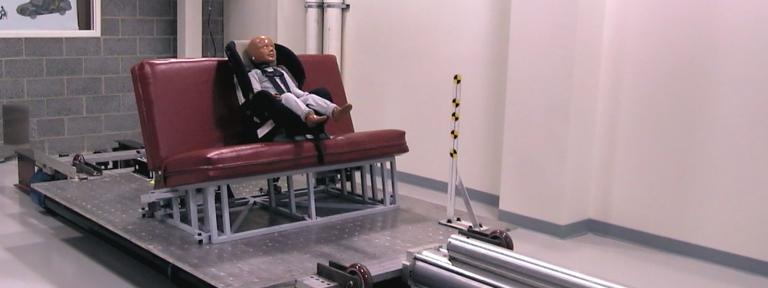
CRASH! Car accidents are over in half the time it takes to blink an eye. But while crashes are over in fraction of a second, crash safety engineers spend a lot of time preparing for them to happen. And that preparation is getting more complex as the Federal Government continues to increase safety requirements for new vehicles.
These requirements make it challenging for carmakers to hire qualified crash safety engineers. Until recently there were no undergraduate engineering schools that specialized in training crash safety engineers. That changed with the inception of Kettering University's Bioengineering-Crash Safety program.
The overall curriculum is simply structured in two approaches: using seatbelts, airbags, the steering wheel, and the design of the seat and pedals to keep the occupant safe, and looking at different ways to design the car around the occupant to keep the occupant as safe as possible. For example, so-called crumple zones at the front of the car can keep the occupant safe by preventing crumpling of the inside of the car.
This semester, Kettering has integrated the simulated occupant safety testing with hands-on, real world experience in the Crash Safety Center for the first time. Dr. Patrick Atkinson '91, associate professor of Mechanical Engineering, is teaching the first course focusing on how to best use airbags, seatbelts and child restraints to protect the occupant.
The Center is comprised of two parts: the crash sled and the Virtual Crash Testing Laboratory. The Crash Sled is essentially a large cart or sled attached to an 80 foot track that can accelerate to 30 to 40 mph and run into an 80,000 pound cement wall. Crash test dummies, car seats, parts of the interior, and other relevant car parts are attached to the sled. Students study how well the seat belts, airbags and other safety technology protect the dummy during the 'crash.'
In the Virtual Crash Testing Laboratory, students use Mathematical Dynamic Modeling (MADYMO) software to study crash after crash at their computer workstations.
"This is what is exciting," said Atkinson, "this kind of learning experience is at the cutting edge. Students are studying these very dynamic crash events in the computer and then do the same in the crash lab. With this A-to-B comparison, students can start to appreciate the complexities of a crash, the biomechanics of injury, and how and when to use computer simulations versus the crash sled."
Atkinson and other faculty at Kettering have used the Crash Safety Center in a variety of academic applications, but this is the first time a class has focused solely on the interior safety restraints. Dr. Massoud Tavakoli, professor of Mechanical Engineering, used the Crash Lab this past fall for the course dealing with how vehicle design influences occupant safety.
For more information on how well your car performs, or for information on vehicle safety ratings, visit the Federal Governments safety ratings website and the Insurance Institute for Highway Safety website.
Written by Dawn Hibbard and Dr. Patrick Atkinson
(810) 762-9865
dhibbard@kettering.edu or patkinso@kettering.edu